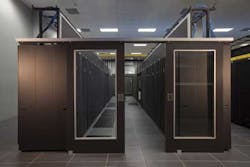By Jenny Zhang
Today's water utilities face a variety of challenges including decreasing water supply, increasing population and increasing pollutants. Utilizing effective water utility management techniques is crucial to the efficient use of water as well as conservation efforts. Business intelligence and performance metrics play a large role in creating this efficient process for water consumption, which relies on the use of digital technology to optimize operations. This includes metrics such as customer satisfaction, operational optimization, community sustainability, infrastructure stability and numerous other factors.
In today's competitive marketplace, this digital transformation is helping deliver new capabilities to achieve greater resource efficiency and better customer service. Water agencies are aiming to become more customer-centric. Managers are leveraging technology to achieve a number of goals, widely ranging from analyzing consumption patterns to managing accurate billing.
According to a 2012 InformationWeek report, technology itself is rapidly changing, especially in the areas of cloud computing and big data analytics. Its evolution can be applied to achieve all types of business challenges. Consider this: just three years ago, 47 percent of participants in the study reported lowering business or IT costs as a priority, compared to the 29 percent today. The focus today is on the customer, with 37 percent of participants citing deployment of customer-facing mobile applications.
IT departments are becoming more strategic within organizations to take on larger roles in leading business transformation to explore new areas of efficiencies and revenue-generating opportunities. Water utilities are no different, with a concerted focus on making sure the customer is valued by providing better, more responsive services.
Key Transformational Trends
While customer satisfaction has always been important, businesses (and water utilities are no exception) are now playing by new rules. As organizations are digitally transforming, IT departments have evolved from merely serving the company to becoming a strategic component in shaping future growth and success. In the IT world, the primary digital trends are:
- Customer-centric collaboration and self-service capabilities for consumers
- Mobility — getting the right information to the right people quickly
- In-depth analytics and dashboards to make strategic decisions
- SAP HANA and cloud computing — efficiently bringing near real-time information to decision making
The increasing use of digital technology provides for the adoption of service innovations, greater efficiency and more streamlined "real-time" performance. By utilizing the massive amounts of data already collected to affect business decisions, utilities can drive the improvement in service quality, and more customer-oriented products and services.
Consider mobility, for example. With over four billion mobile devices in the world (and roughly a quarter of them smartphones), more people spend time communicating online than they do in person. People are now able to communicate on any device, anywhere, and at any time. This not only changes the way customers behave but also impacts businesses in all industries.
"The impact of these changes on business is immediate and inescapable," said Joshua Blair, Senior Vice President, ASUG. "Keeping up and staying ahead of the technology curve is no longer an option — it's survival."
For water utilities, mobility can mean a faster, more efficient way to collect data and make better decisions more quickly. By putting devices and applications in the hands of employees and customers wherever they are, field employees and customers can input service order information or requests in a more streamlined fashion. And with more and more businesses investing in customer-facing mobile applications, water utilities can use mobile solutions to gain instant access to customer accounts, as well as proactively address service requests and monitor maintenance needs with speed.
Customer-centric Technology Solutions for Water Utilities
Companies are changing to become closer to the customer and evolving their businesses to become more collaborative, self-service platforms in customer relationship management (CRM). Cloud computing and big data include social media management or 'social business,' with customers updating in real-time their good (and not so good) experiences. Customers can also use self-service applications to directly turn on and off services — providing 24/7 support by eliminating the need to speak directly to a customer service representative.
Digital technology brings the capability to provide more accurate billing and payment processing, as well as faster response times for changing addresses and bills, removing and adding services, and many other functions. Through technology, water utilities can now gain new insight into customer needs and provide more value not only to individual households but also to agricultural areas with irrigation systems.
Beyond CRM benefits and mobility solutions, IT also can transform how water utilities maintain their infrastructure technology and operations. For example, one of the biggest challenges is a workforce approaching retirement en masse, taking with them vast knowledge about legacy systems.
The Sonoma County Water Agency experienced such a problem, and chose to partner with SAP hosting and cloud provider Secure-24 for its IT solutions.
Case Study: Sonoma County Water Agency & Secure-24
The Sonoma County Water Agency came to a crossroads with the people and machines that ran their operations. Like many water utilities, agency veterans were retiring. Its in-house IT structure was outdated and needed upgrades. Facing an operational restructure, the agency looked at its aging mainframe, which was running a critical software application developed in-house to perform cost accounting and overhead allocation.
The agency is the primary source of drinking water for municipalities representing more than 600,000 residents in Sonoma and Marin counties in California. It oversees eight sanitation districts and acts as a local sponsor for federal flood protection and water supply projects.
The choice came down to assigning employees to learn the old systems and improve the software applications or seek a new hardware-software solution through an outside provider. With already heavy workloads, maintaining the legacy system wasn't a viable solution.
The agency chose SAP, an enterprise resource planning software, to handle all of the cost accounting and overhead allocation computing needs. Through a search and recommendations by SAP, the Sonoma County Water Agency selected and partnered with Secure-24, a Michigan-based provider of managed hosting, enterprise cloud computing and disaster recovery.
Secure-24 devised a solution to develop, implement and host the agency's applications in the SAP environment. Plus, the flexible and scalable hosting solution allowed the water agency to implement new components without significant increases in cost.
The newest version of the SAP software helped the agency consolidate the data extracted from two separate employee time cards into one, eliminate the duplication, and streamline data management. The agency's time reporting and payroll software also had to interface with the county's payroll and ledger systems, and SAP allowed both sides to sync in tandem with the county's records and policies. With this solution, the agency was able to save up to 6,200 hours a year in time resources, and reallocate resources so its staff could focus on the business rather than running a data center.
Transforming Water Utilities with Digital Advancements
With the onset of transformative IT developments, water utilities are finding faster and more efficient ways to provide higher quality services to customers. Like the Sonoma County Water Agency, utilities across the nation are phasing out old legacy systems for more innovative ERP systems, such as SAP.
With these changes, water utilities are gaining improved monitoring of unbilled or under-billed usage, enabling them to find uncollected revenue. They are able to monitor water usage and conservation more effectively while gaining improved regulatory compliance by using consistent reporting on customer service. And lastly, there is an increased awareness of customers' inquiries, complaints, behaviors and preferences, helping water utilities provide more effective services and create new incentives and pricing plans.
About the Author: Jenny Zhang focuses on market trend analysis and communications at Secure-24, a leading provider of enterprise cloud computing and managed hosting. She is a graduate of the University of Michigan Ann Arbor.




